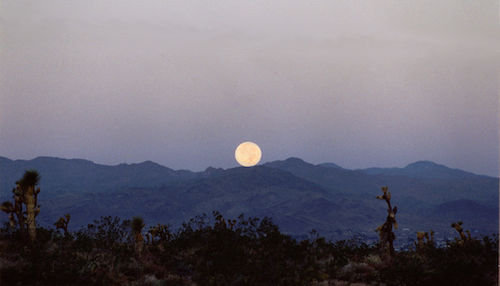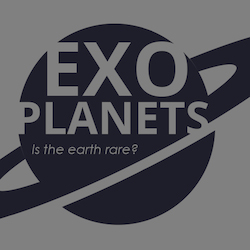 Intelligent Design
Intelligent Design
 Physics, Earth & Space
Physics, Earth & Space
We Sure Are Lucky to Have Our Moon (Among Other Things)

Editor’s Note: As a series at ENV, we are pleased to present "Exoplanets." Daniel Bakken is an engineer who teaches astronomy at the college level, and an entrepreneur in compound semiconductor crystal growth. In a series of articles he critically examines recent claims about exoplanets beyond our solar system, asking whether our own planet Earth is a rarity, or common, in the cosmos. For previous articles in the series, see here.
 Along with those we’ve already discussed in this series, further parameters must be added to the list of conditions for a life-supporting planet. Let’s turn now to the carbonate-silicate cycle and the Moon. Classical models of habitable zones assume that the host star and the planet’s atmospheres are stable, yet this is not the case. For example, as the Sun has brightened over the last four billion years, geologic processes and life on Earth have modified its atmosphere, and compensated for the "faint young Sun paradox."1 The geologic process is the carbonate-silicate cycle which removes carbon dioxide from the atmosphere at approximately the right rate to reduce the greenhouse effect to compensate for the increasing luminosity of the Sun. This process is driven by plate tectonics.2 As Fran�ois Forget says, "This is a very peculiar regime"3 that causes the thin plates to ride on convection cells in the mantle of the Earth. Is plate tectonics something that should be common in Earth-sized planets? Or is it very rare?
Along with those we’ve already discussed in this series, further parameters must be added to the list of conditions for a life-supporting planet. Let’s turn now to the carbonate-silicate cycle and the Moon. Classical models of habitable zones assume that the host star and the planet’s atmospheres are stable, yet this is not the case. For example, as the Sun has brightened over the last four billion years, geologic processes and life on Earth have modified its atmosphere, and compensated for the "faint young Sun paradox."1 The geologic process is the carbonate-silicate cycle which removes carbon dioxide from the atmosphere at approximately the right rate to reduce the greenhouse effect to compensate for the increasing luminosity of the Sun. This process is driven by plate tectonics.2 As Fran�ois Forget says, "This is a very peculiar regime"3 that causes the thin plates to ride on convection cells in the mantle of the Earth. Is plate tectonics something that should be common in Earth-sized planets? Or is it very rare?
Earth is the only body in the solar system with plate tectonics, and "its origin is not well understood."4 The other solar system bodies exhibit a rigid crust that is not broken up and dynamic, like Earth’s. There are differing views on the probability of super-Earths having plate tectonics. Most likely the models are not accurate enough to give a clear indication.5 But as Forget says, "What these studies highlight is the possibility that the Earth may be very ‘lucky’ to be in an exact size range (within a few percent) that allows for plate tectonics."6 We have a clear example in Venus which, while being very close to the Earth in size, remarkably shows no signs of Earth-like plate tectonics, and "shows that the Earth case may be rare."7 Surface water may also be a key ingredient of plate tectonics, as well as Earth’s composition and history.8 We now understand that the Moon may have been a primary player in giving Earth its plate tectonics.
How did the Earth get such a large moon? It is far too large for the Earth to have captured it, and because of its chemistry and orbital parameters, the only plausible model is an impact scenario.9 The Moon’s creation event is also the most plausible explanation for the resultant thin crust of the Earth that enables its efficient plate tectonics. The most recent models suggest the Earth collided with a body with a mass comparable to itself. These two bodies merged, and became the Earth-Moon system. The Earth ended up with more mass, and received the cores of both bodies, giving it a large iron rich core, and more radioactive elements. This may explain some of the differences between Venus and Earth. With more iron and heat-generating radioactive materials, the Earth is able to generate its large magnetic field, which Venus lacks. The Moon ended up with more crustal lighter density materials, leaving the crust of the Earth thinner than it would have been.10
Earth’s plate tectonics can be so efficient because the crust is very thin, cracked, and can slide over the mantle much more easily. Plate tectonics are also responsible for the continent-versus-land distribution. Without it, Earth would be a waterworld, and there would be no carbonate-silicate cycle to maintain the climate over billions of years. We wouldn’t be here, and likely no technological civilization of any kind.11
Current simulations suggest that only about 2 percent of Earth-sized planets should form an Earth-Moon type system.12 And by an amazing coincidence, the Moon’s size is also quite important to the stability of the Earth’s tilt. If it had been any larger, it would destabilize our tilt, for example. On the other hand, much smaller, and Earth’s climate would have suffered more frequent and severe ice ages.13 The other planets in our solar system contribute to this as well, as the interactions between the Moon’s influence on the Earth, and the other planets’ gravitational effects could have been comparable, where the large planets are not spaced widely, causing chaotic swings in the tilt of the Earth’s axis.14 So again the large planets, and their orbits, play a role in the habitability of the Earth.15
References Cited:
(1) Kasting, How to Find a Habitable Planet, 42-43.
(2) Ibid., 51-53.
(3) Forget, "On the Probability of Habitable Planets," 185.
(4) Ibid.
(5) Ibid.
(6) Ibid., 11.
(7) Ibid.
(8) Gribbin, Alone in the Universe, 130-131.
(9) Gonzalez, "Setting the Stage for Habitable Planets," 54.
(10) Gribbin, Alone in the Universe, 117-118.
(11) Ibid., 146.
(12) Gonzalez, "Setting the Stage for Habitable Planets," 54.
(13) Waltham, Lucky Planet, 176.
(14) Ibid., 176.
(15) Gonzalez, "Setting the Stage for Habitable Planets," 54.
